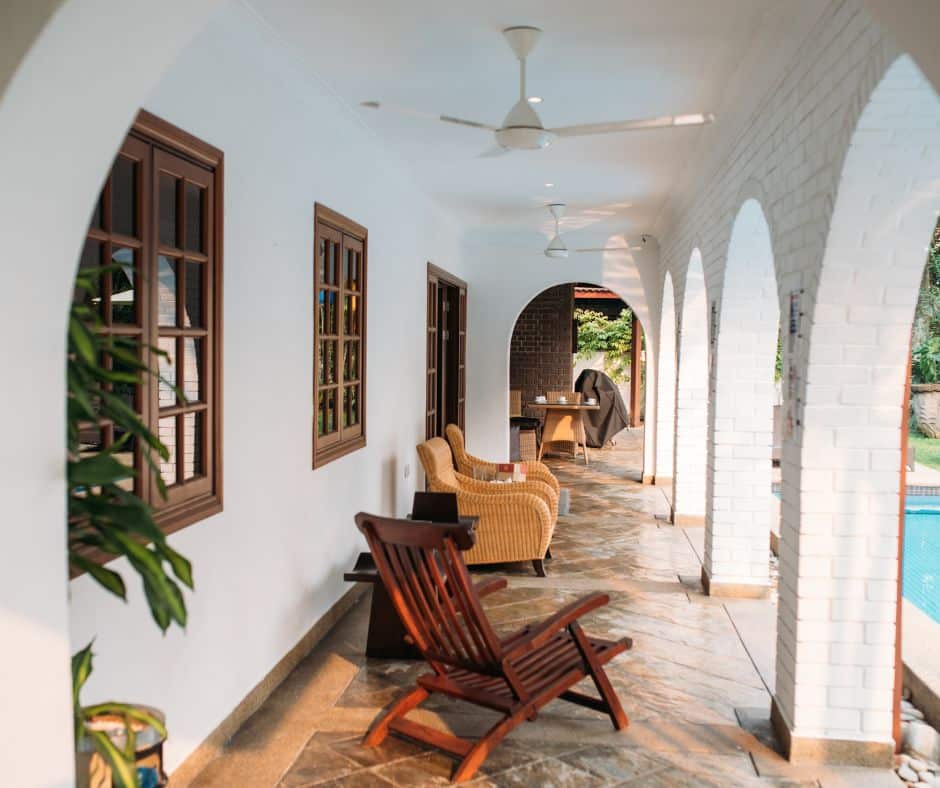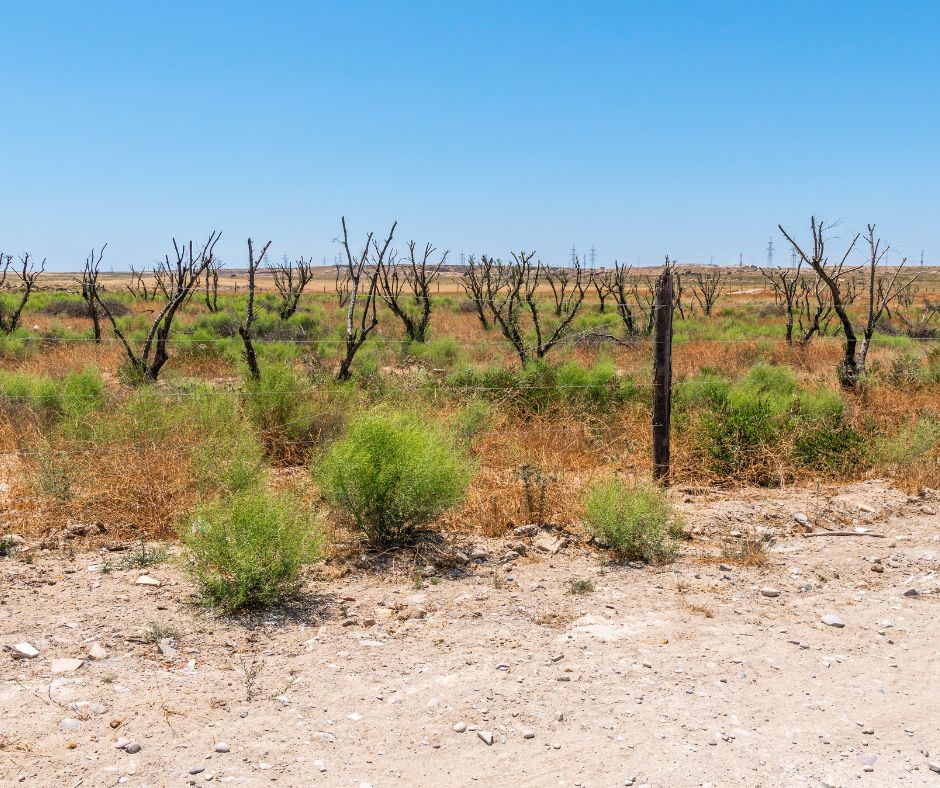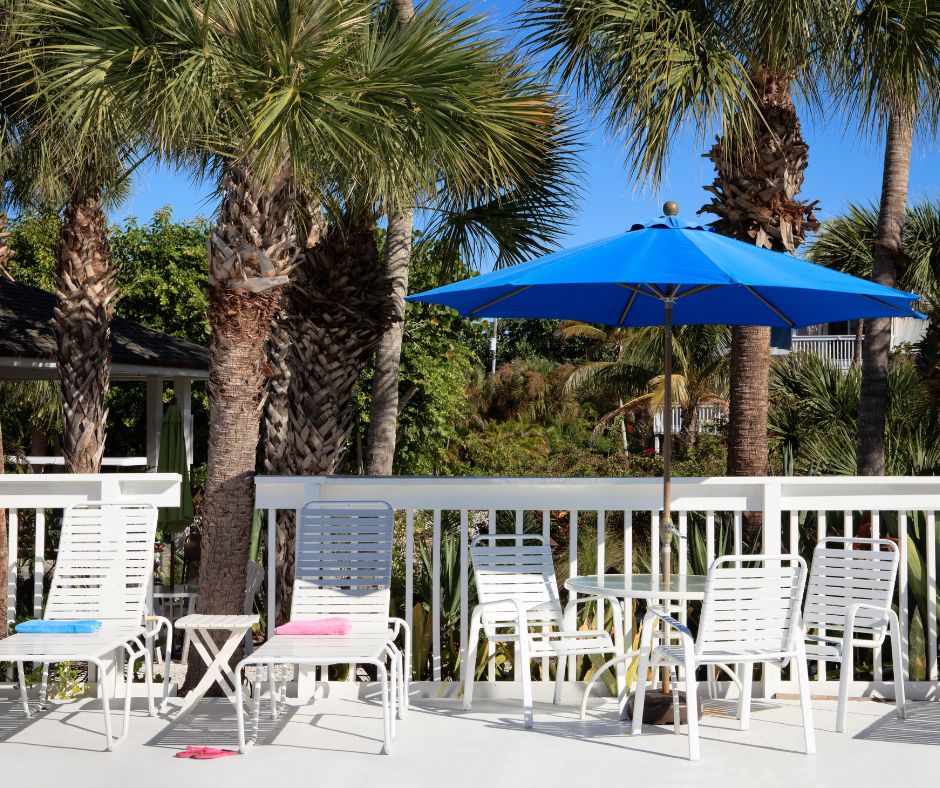The realm of interior design profoundly acknowledges the significant influence of climate, which not only boosts the practicality of our spaces but also their visual charm. This intrinsic link between the climate surrounding us and our interior design choices goes beyond mere comfort—it reflects our ingenious capacity to coexist seamlessly with nature.
The Challenge of Diverse Climates for Interior Designers
Tackling the vast spectrum of climates, from the dense, warm embrace of the tropics to the tranquil, chilly expanses of the tundra, demands a detailed comprehension of the unique ways in which each setting affects our living environments. For interior designers, the challenge extends beyond ensuring physical comfort to encapsulating the spirit of each climate within their designs. The goal is to forge spaces that not only meet our physical comfort needs but also resonate on a visual and emotional level with those who dwell within them.
Overview of Design Approaches from Tropical to Tundra
In the warmth of the tropics, designs focus on fostering breezy, sunlight-dappled interiors that promote natural air flow and mirror the lushness of the outside world. On the flip side, the approach for colder climates centers around crafting an inviting warmth, utilizing insulating elements and textures that conjure feelings of coziness and security. From the gentle zephyrs of equatorial lands to the bracing breezes of mountainous terrains, interior design presents a myriad of options for customizing our homes to align with our climatic conditions, illustrating the rich variety of our global environment.

Key Considerations for Tropical Climate Design
Designing interiors within the balmy embrace of tropical climates requires a keen understanding of the environment’s distinctive challenges and opportunities. This unique setting calls for a strategic approach to interior design, where functionality meets the aesthetic charm, reflecting the vibrant essence of the tropics. Here’s a fresh take on crafting spaces that are not only visually captivating but also comfortably habitable in the warm, humid conditions typical of tropical regions.
Importance of Natural Ventilation and Airflow
The secret to creating a refreshing oasis in a tropical home lies in optimizing natural ventilation. This approach is pivotal for promoting air circulation, crucial for dissipating heat and fostering a cool, airy environment. Think of designing layouts that encourage the seamless flow of breezes through rooms, using strategically placed windows, wide doorways, and open-plan concepts to facilitate a natural cooling system. It’s about shaping spaces that breathe—where the air moves freely, diminishing the reliance on artificial cooling.
Selecting Moisture-Resistant Materials and Fabrics
In the humid embrace of the tropics, choosing the right materials and fabrics is crucial for maintaining the longevity and freshness of your interiors. Opt for materials known for their resilience to moisture, such as bamboo, rattan, or treated hardwoods, which not only stand up well to the damp climate but also add a touch of natural beauty to your space. Similarly, in selecting fabrics, gravitate towards those that resist humidity and dry quickly, like microfiber, polyester blends, or specially treated natural fibers. These choices are essential for ensuring that your home remains a comfortable, mold-free haven.
Integrating Natural Elements and Bright Colors
Embrace the lush, vibrant ambiance of tropical landscapes by incorporating natural elements and a palette of bright, cheerful colors into your interior design. Fill your spaces with an array of indoor plants that thrive in humid conditions, from towering palms to delicate ferns, to bring a slice of the tropical outdoors inside. Complement this greenery with splashes of color—think azure blues, sunny yellows, and lush greens—that echo the natural surroundings and inject your home with energy and warmth. This approach not only enhances the aesthetic appeal of your interiors but also creates a lively, uplifting environment that celebrates tropical living.
Tailoring interior design to suit the nuances of a tropical climate is an exciting challenge that blends creativity with practicality. By focusing on natural ventilation, choosing the right materials, and embracing the vibrant colors and textures of the tropics, you can craft spaces that are not only beautiful and in harmony with their environment but also perfectly suited to the demands of tropical living. This thoughtful approach ensures that your home is a comfortable, serene retreat that stands the test of time, providing a sanctuary from the heat and humidity outside.

Designing for Dry and Arid Climates
Navigating the nuances of interior design in dry and arid climates involves a harmonious blend of functionality and style. These distinct environments, with their unique charm and challenging conditions, call for innovative design solutions that prioritize comfort, sustainability, and beauty. Here’s a fresh perspective on creating spaces that are well-suited to arid climates, focusing on efficient water use, temperature management, and embracing the local landscape through design.
Emphasizing Water Conservation and Efficiency
In regions where every drop of water counts, integrating water-efficient practices into your interior design is not only eco-friendly but essential. Opting for fixtures that reduce water consumption, such as high-efficiency toilets and aerated faucets, can make a significant difference in your home’s overall sustainability. Furthermore, the incorporation of systems that reuse water, like those that repurpose greywater for watering indoor plants, reflects a deep respect for the local environment. These choices not only conserve precious resources but also add a layer of thoughtful design to your home.
Heat Reflective Materials and Thermal Mass Use
Adapting to the thermal challenges of arid climates can be elegantly managed through smart material choices. Utilizing materials that reflect the sun’s rays, like reflective roof coatings or pale exterior paints, can help keep your home cooler. At the same time, materials with good thermal mass, such as stone or tile, absorb coolness during the cooler night and release it slowly throughout the day, helping to naturally moderate indoor temperatures. This strategic use of materials ensures that your interior remains comfortable and energy-efficient, reducing the need for artificial cooling.
Desert-Inspired Aesthetics and Color Schemes
Drawing inspiration from the stunning landscapes of dry and arid regions can transform your interior space into a reflection of the natural world outside. Adopting a color palette that echoes the hues of the desert, from warm earth tones to the vibrant colors of a sunset, brings a piece of the outdoors inside. Incorporating natural textures and materials, like raw wood, stone, and linen, adds depth and authenticity to your design. These elements, inspired by the environment, create a serene and inviting space that celebrates the unique beauty of arid landscapes.
The specific demands of dry and arid climates is a creative journey that combines practical considerations with aesthetic exploration. By prioritizing water efficiency, thermal control, and local aesthetics, your home can become a sustainable sanctuary that offers both comfort and connection to the distinctive environment it inhabits. This approach not only enhances the livability of your space but also pays homage to the natural elegance of arid regions, making your home a true oasis in the desert.

Strategies for Temperate Climate Interiors
Crafting interiors for residences situated in the ever-changing environment of temperate climates calls for an insightful approach to interior design. These areas, celebrated for their distinct seasons ranging from sunny summers to chilly winters, demand interiors that are not just aesthetically pleasing but also supremely versatile and comfortable through every seasonal shift. Let’s explore effective design strategies that ensure your home seamlessly adapts to its surroundings while maintaining a balance of style, comfort, and energy efficiency.
Adaptable Spaces for Seasonal Variability
The hallmark of a well-designed home in a temperate climate is its ability to transform in tune with the seasons. This involves selecting furniture and decor that can easily be adjusted or reoriented to suit the temperature and mood outside. Opt for lightweight and breathable textiles during the warmer months, which can be replaced with thicker, more insulating fabrics as the weather cools. This flexibility not only ensures your home stays comfortable but also keeps it looking fresh and relevant throughout the year.
Focus on Energy Efficiency and Insulation
In regions experiencing a broad range of temperatures, optimizing your home for energy conservation is crucial. Effective insulation plays a vital role in this, with high-quality window fittings and thorough draft-proofing acting as barriers against temperature fluctuations. Incorporating renewable energy solutions and smart systems for heating and cooling can significantly enhance the efficiency of your home, cutting down on energy costs while promoting a greener lifestyle.
Incorporating Transitional Outdoor-Indoor Areas
One of the delights of living in a temperate climate is the ability to enjoy both the coziness of the indoors and the beauty of the outdoors across different seasons. Designing spaces that blur the boundaries between inside and outside, like glass-enclosed patios or fold-away doors, extends your living space into the natural setting of your garden or yard. These design choices not only increase the aesthetic and usable space of your home but also invite an abundance of natural light, making your home feel more spacious and connected to the outdoor environment.
Incorporating these design principles into your home ensures it is perfectly aligned with the demands of living in a temperate climate, offering a space that is adaptable, energy-efficient, and harmoniously connected with its natural surroundings. By focusing on versatility, sustainability, and the seamless integration of indoor and outdoor spaces, your home can stand as a testament to thoughtful design, offering comfort and style through every season.

Creating Comfort in Mediterranean Climates
Crafting the ideal interior for homes set in the warm embrace of Mediterranean climates involves a creative interplay between light, materials, and the seamless transition between indoor and outdoor living. This distinct climate, celebrated for its sun-drenched days and crisp, cool evenings, sets the stage for interiors that are both luminous and comfortably cool. Let’s dive into the art of striking the perfect balance with interior design strategies that ensure your home is a tranquil haven reflective of its vibrant setting.
Maximizing Natural Light While Controlling Heat
The abundance of sunshine in Mediterranean regions is a true gift, illuminating homes with vibrant natural light and uplifting the spirit of each space. Embracing this light through the strategic placement of windows and perhaps the addition of sunroofs can invigorate your home, minimizing the need for artificial lighting. Yet, managing indoor heat is equally crucial. Employing adjustable shading solutions, such as retractable awnings or light-diffusing curtains, allows you to control the amount of sunlight entering your home, maintaining a cool and inviting atmosphere. Opt for pale hues and shiny surfaces in your decor to reflect the sunlight, aiding in keeping your interiors refreshingly cool.
Using Terracotta, Stone, and Natural Fibers
The essence of Mediterranean design lies in its connection to nature, utilizing materials like terracotta, stone, and woven textiles to evoke a sense of earthy elegance. Terracotta tiles, with their cool underfoot and rustic appeal, alongside stone accents, bring durability and a piece of the natural world into your home. Furnishings and decorations crafted from organic fibers such as cotton, bamboo, or rattan add layers of texture and comfort while ensuring the space feels airy and open.
Outdoor Living Spaces and Ventilated Design
Living in a Mediterranean climate naturally extends the home into the great outdoors, where life unfolds in harmony with nature. Designing inviting outdoor spaces, from lush patios to breezy balconies, encourages relaxation and entertainment in the fresh air. These areas, connected to the indoors through folding doors or expansive passageways, enhance the fluidity of your living space, inviting the outdoors in. Prioritizing ventilation within your home’s design, by facilitating cross breezes through multiple openings, ensures a naturally cool environment, perfect for unwinding even on the warmest days.
Adapting these design principles to your Mediterranean climate home not only elevates its style but also amplifies comfort, creating a living space that is both a joy to inhabit and a true representation of its scenic locale. Through careful consideration of light, material choice, and the integration of indoor and outdoor living, your home becomes a serene sanctuary, perfectly attuned to the rhythms of Mediterranean life.

Interior Design for Continental Climates
Designing interiors for homes set in continental climates demands a clever blend of functionality and style, given the extreme temperature fluctuations characteristic of these regions. From hot summers to bitter winters, the challenge lies in creating spaces that are both inviting and adaptable to the weather outside. Let’s explore innovative design strategies that ensure your living environment remains comfortable and chic throughout the year.
Managing Extreme Seasonal Temperature Variations
In locales where temperatures can vary dramatically with the seasons, achieving a stable indoor climate is crucial. Focusing on features like insulated window treatments and efficient heating and cooling systems can significantly enhance your home’s adaptability. The installation of thermal curtains and high-quality insulation materials keeps warmth in during the winter and blocks out heat in the summer. Smart climate control systems add a layer of sophistication, allowing you to fine-tune your environment for optimal comfort at any time of the year.
Layered Lighting and Thermal Comfort Strategies
Given the varying amounts of natural light throughout the year, a versatile lighting scheme is essential in continental climates. A combination of different lighting types, from overhead fixtures to soft, ambient lamps, allows you to adjust the illumination in your home based on the time of day and season. To complement this, incorporating elements of thermal comfort like radiant floor heating or energy-efficient fans can help maintain a pleasant temperature indoors. Smart systems that manage both lighting and temperature control ensure your home is always set to your preferred comfort level, effortlessly transitioning from season to season.
Durable Materials and Cozy Textures for Cold Months
When it comes to materials and textures, choosing options that can withstand the test of time and the rigors of changing seasons is key. Hard-wearing floor options such as engineered wood or ceramic tiles offer longevity and ease of maintenance. To counterbalance these sturdy materials, infusing your space with layers of cozy textiles—think lush area rugs, velvety throws, and cushioned seating—brings warmth and depth to your interiors. These soft touches not only create a snug atmosphere during colder months but also add a visual and tactile contrast that elevates the overall design.
In crafting interiors suited to continental climates, the goal is to merge practicality with aesthetic appeal, ensuring your home is equipped to handle seasonal extremes while remaining a stylish sanctuary. By focusing on thermal efficiency, adaptive lighting, and the strategic use of durable yet cozy materials, you can create a space that not only responds to the environment but also reflects your personal taste and comfort preferences, making your home a delightful retreat all year round.

Designing for Subtropical Climates
Making interior spaces to suit the warm and humid conditions of subtropical climates is an art that marries functionality with aesthetic beauty. The goal is to create environments that are not only visually appealing but also inherently cool and comfortable. Let’s dive into strategies for designing homes that stand up to the subtropical heat while drawing inspiration from their lush, vibrant surroundings.
Combining Ventilation with Humidity Control
Achieving a serene indoor climate in subtropical areas hinges on effective airflow and moisture regulation. Strategic placement of windows and openings facilitates a breezy environment by leveraging natural cross breezes, diminishing the need for constant air conditioning use. Adding ceiling fans to the mix promotes air movement, enhancing the cooling effect. For humidity control, integrating solutions such as air conditioners with dehumidifying capabilities or standalone dehumidifiers can keep indoor humidity levels in check, ensuring your living space remains a refreshing haven against the muggy outdoor air.
Lush Greenery and Water Elements Indoors
Incorporating natural elements into your home not only pays homage to the subtropical landscape but also contributes to a cooler and more tranquil living environment. Introducing a variety of indoor plants can transform your space into a verdant retreat, improving air quality and adding a splash of color. Water elements, such as tabletop fountains or wall-mounted water features, bring a sense of calm and coolness, their gentle sounds offering a peaceful backdrop to daily life. This connection to nature creates a soothing, rejuvenating home atmosphere.
Bright, Airy Spaces with Tropical Influences
Maximizing natural light while protecting against heat is crucial in subtropical home design. Opt for expansive windows with protective glazing to brighten up your interiors without inviting excessive heat. The architectural layout should promote openness and fluidity, with high ceilings and open-plan designs enhancing the sense of spaciousness and airiness. Decor-wise, embrace the essence of tropical elegance with vibrant colors, airy fabrics, and materials like wicker or bamboo, which resonate with the outdoor environment. These elements work together to forge a living space that is both invigorating and soothing, a true reflection of subtropical charm.
The focus is on creating spaces that balance the warmth and humidity of the environment with cool, breathable living areas. By emphasizing natural ventilation, incorporating elements of the natural world, and designing with an eye for tropical aesthetics, your home can become a sanctuary that is both in harmony with its surroundings and a delightful escape from the heat, embodying the spirit of subtropical elegance and comfort.

Adapting Interiors for Cold and Polar Climates
Your home’s interior for life in cold and polar climates demands a strategic design approach, focusing on warmth retention and creating a welcoming ambiance. In environments where winter dominates, ensuring your living space remains warm and inviting is paramount. Let’s delve into innovative ways to enhance your home’s coziness while keeping it stylish and efficient against the backdrop of chilly temperatures.
Insulation and Heat Conservation Techniques
At the heart of maintaining a snug home during freezing temperatures is the emphasis on top-notch insulation and the preservation of heat. Upgrading your home with high-quality insulation in the walls and attic acts as a barrier against the cold, locking in warmth. Opting for windows with double or even triple panes significantly reduces heat escape, keeping your interiors pleasantly warm. Addressing leaks and drafts around doors and windows with weather stripping is another effective step in ensuring the cold stays out. These enhancements not only elevate your home’s thermal efficiency but also transform it into a cozy refuge from the winter chill.
Warm, Inviting Color Palettes and Textures
The ambiance of your home can be profoundly influenced by the choice of color schemes and textures. Warm, rich tones such as deep reds, chocolate browns, or elegant charcoals can infuse a sense of coziness into any space. Compliment these hues with plush textiles—think thick knitted throws, velvety pillows, and soft, shaggy rugs. These additions introduce a tactile quality that beckons relaxation and comfort, essential in crafting an inviting space amidst the cold.
Efficient and Aesthetic Heating Solutions
Effective heating goes beyond functionality; it’s an integral part of your interior’s aesthetic. Innovative heating solutions like sleek, modern radiators or underfloor heating systems provide consistent warmth without detracting from your home’s design. The allure of a fireplace as a centerpiece cannot be overstated, offering both a visual and physical source of warmth. Whether you prefer the traditional charm of a wood-burning hearth or the clean simplicity of an electric fireplace, incorporating these elements can elevate the sense of warmth and hospitality in your home.
Designing for cold and polar climates involves a layered approach, blending effective insulation with strategic color and texture choices, alongside elegant heating solutions. By prioritizing these aspects, you can ensure your home not only combats the cold effectively but also serves as a warm, inviting sanctuary where comfort meets style. This thoughtful interior design strategy guarantees a welcoming and cozy atmosphere, perfect for enjoying the serene beauty of winter from the comfort of your home.

High-Altitude and Mountain Climate Design
Optimizing your home’s interior for life in cold and polar climates demands a strategic design approach, focusing on warmth retention and creating a welcoming ambiance. In environments where winter dominates, ensuring your living space remains warm and inviting is paramount. Let’s delve into innovative ways to enhance your home’s coziness while keeping it stylish and efficient against the backdrop of chilly temperatures.
Emphasizing Durability and Thermal Efficiency
At the heart of maintaining a snug home during freezing temperatures is the emphasis on top-notch insulation and the preservation of heat. Upgrading your home with high-quality insulation in the walls and attic acts as a barrier against the cold, locking in warmth. Opting for windows with double or even triple panes significantly reduces heat escape, keeping your interiors pleasantly warm. Addressing leaks and drafts around doors and windows with weather stripping is another effective step in ensuring the cold stays out. These enhancements not only elevate your home’s thermal efficiency but also transform it into a cozy refuge from the winter chill.
Incorporating Natural, Rustic Elements
The ambiance of your home can be profoundly influenced by the choice of color schemes and textures. Warm, rich tones such as deep reds, chocolate browns, or elegant charcoals can infuse a sense of coziness into any space. Compliment these hues with plush textiles—think thick knitted throws, velvety pillows, and soft, shaggy rugs. These additions introduce a tactile quality that beckons relaxation and comfort, essential in crafting an inviting space amidst the cold.
Strategic Windows for Views and Solar Gain
Effective heating goes beyond functionality; it’s an integral part of your interior’s aesthetic. Innovative heating solutions like sleek, modern radiators or underfloor heating systems provide consistent warmth without detracting from your home’s design. The allure of a fireplace as a centerpiece cannot be overstated, offering both a visual and physical source of warmth. Whether you prefer the traditional charm of a wood-burning hearth or the clean simplicity of an electric fireplace, incorporating these elements can elevate the sense of warmth and hospitality in your home.
Designing for cold and polar climates involves a layered approach, blending effective insulation with strategic color and texture choices, alongside elegant heating solutions. By prioritizing these aspects, you can ensure your home not only combats the cold effectively but also serves as a warm, inviting sanctuary where comfort meets style. This thoughtful interior design strategy guarantees a welcoming and cozy atmosphere, perfect for enjoying the serene beauty of winter from the comfort of your home.

Conclusion - The Global Tapestry of Interior Design
Navigating the world of interior design reveals an intricate panorama influenced deeply by the planet’s varied climatic conditions. From the warmth of tropical locales to the chill of polar regions, every climate zone presents distinct challenges that shape our design strategies. This deep dive into the interplay between climate and interior design not only broadens our perspective but also underscores the essential role that environmental factors play in shaping aesthetically pleasing and functional living spaces. Let’s revisit our exploration of climate-responsive design, emphasizing the critical themes of sustainability and adaptability as we envisage the future directions of this field.
Recap of Climate's Impact on Design Choices
The impact of climate on interior design is profound, guiding the choice of materials, architectural designs, and even color schemes to suit specific environmental conditions. In hot and humid climates, priorities include enhancing air flow and selecting materials that combat moisture, while cold climates necessitate a focus on warmth retention through insulation and cozy fabrics. This tailored approach ensures that interior spaces are not only visually appealing but are also havens of comfort, reflecting the adaptability of design to meet the demands of diverse climates.
The Importance of Sustainability and Adaptability
Our journey through various climatic zones brings to light the escalating importance of sustainable and adaptive design philosophies. With environmental consciousness on the rise, the integration of eco-friendly materials and practices into interior design has transitioned from a preference to a priority. This shift towards sustainability is complemented by a growing emphasis on creating flexible spaces that can easily adjust to changing environmental conditions and user needs, showcasing the fluid and innovative nature of contemporary interior design.
Future Directions in Climate-Responsive Interior Design
The future of interior design promises an even closer alignment with the principles of climate adaptability. Emerging technologies and materials offer new possibilities for creating spaces that are perfectly attuned to their environmental context. The fusion of smart home functionalities with designs that embrace the natural world points to a future where living spaces not only adapt to the climate but also actively contribute to the well-being of their inhabitants. The horizon for climate-responsive design is expanding, filled with opportunities to craft spaces that are both enchanting and in harmony with the natural environment.
The dialogue between interior design and global climate patterns weaves a compelling story of creativity, sustainability, and innovation. As we move forward, the lessons learned from adapting to various climates will continue to inspire the development of spaces that are not just functional and beautiful but also conscientious reflections of our planet’s diversity. This evolution in design thinking heralds a new era where the spaces we inhabit are fully integrated with the ecological fabric of our world, offering a vision of the future where design transcends aesthetics to become a force for environmental stewardship.

